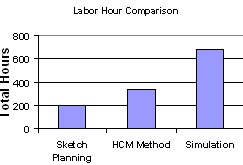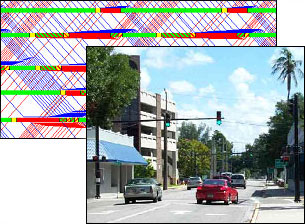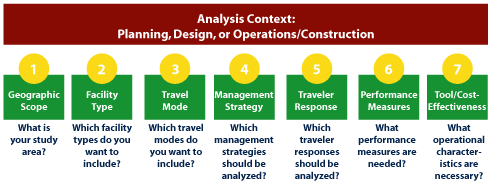Traffic Analysis Toolbox Volume V:
Traffic Analysis Toolbox Case Studies – Benefits and Applications
2.0 Community Benefits
A safe and efficient multimodal transportation system is important for assuring a strong and vibrant community. It is vital to economic development and quality of life. At the same time, the investment costs required to plan, build, manage, and maintain the necessary physical elements are very high, so it is important for elected officials and transportation decision-makers to have access to reliable, consistent, and clear information about system impacts when they are making choices between competing investment opportunities.
A wide range of traffic analysis tools is available to assist in this purpose. But there is no clear guidance about how best to organize and use these tools in a way that reliably, consistently, and clearly supports the transportation decision-making process. The Traffic Analysis Toolbox, developed by the Federal Highway Administration, organizes these tools according to the types of problems and levels of analysis to which they are best suited so that the objectives of reliability, consistency, and clarity can be achieved.
The case studies presented in Chapters 3, 4, and 5 document how various communities have solved real problems efficiently and effectively by applying available traffic analysis tools in the logical and efficient manner described in the Traffic Analysis Toolbox. Nine real-world experiences from across the United States show how application of the right traffic analysis tools at the right stage of the analysis saved time for both the projects and the engineers by identifying effective ways to maximize the capabilities of the existing physical infrastructure along the way and directing scarce investment dollars toward projects with the most community benefit:
- In Juneau, Alaska, sketch planning traffic analysis tools helped achieve community consensus by quickly and clearly highlighting the lane and interchange requirements associated with different alternatives.
- In Tualatin, Oregon, the right combination of Highway Capacity Manual methods and other analytical models identified a signal timing and road realignment strategy that saved millions of dollars in freeway interchange improvements while still accommodating the economic redevelopment of a nearby area.
- In Lee County, Florida, the use of traffic optimization analysis tools resulted in new timing plans for over 100 signals that reduced average peak-hour delays by over 15 percent and saved motorists more than $9 million annually in time, fuel, and vehicle wear.
Clearly, the right application of traffic analysis tools benefits not only the engineers and planners who use them, but also the communities and decision-makers they serve. The Traffic Analysis Toolbox includes an expert system to help make these choices: by answering a few questions about key project characteristics, the expert system will suggest the type of traffic analysis tool to get you to clear, complete, and consistent answers that are necessary for making sound transportation investment decisions in your community. What's even better, this expert system is freely available from the Federal Highway Administration. It should be a part of every transportation agency's toolbox, and it can be found at: http://ops.fhwa.dot.gov/trafficanalysistools/index.htm.
While other volumes of the Toolbox provide more specific guidance related to the technical aspects of selecting the right tool, this volume provides insight into the benefits achieved through identifying and using the appropriate traffic analysis procedures and tools.



